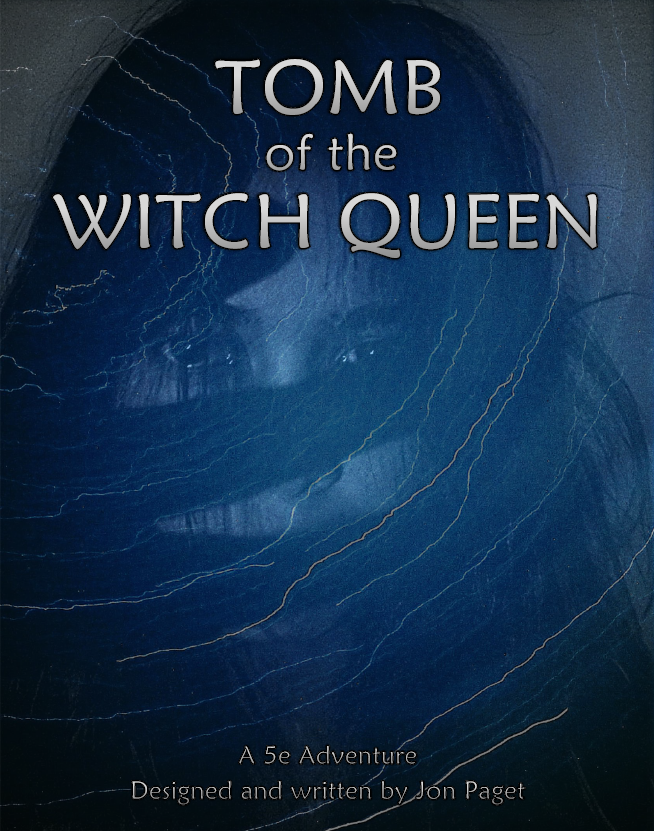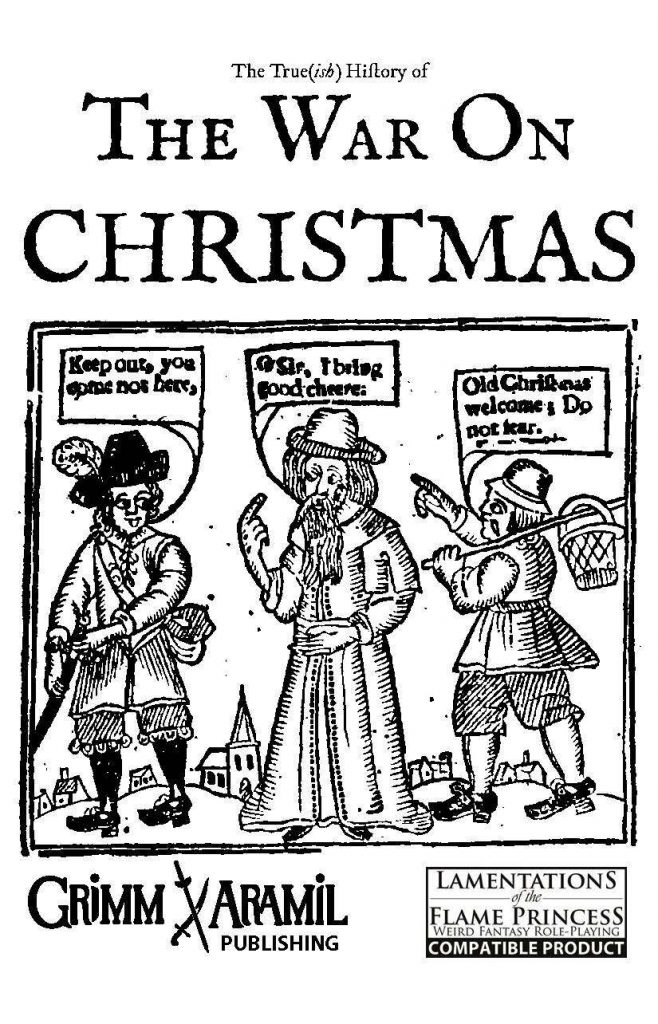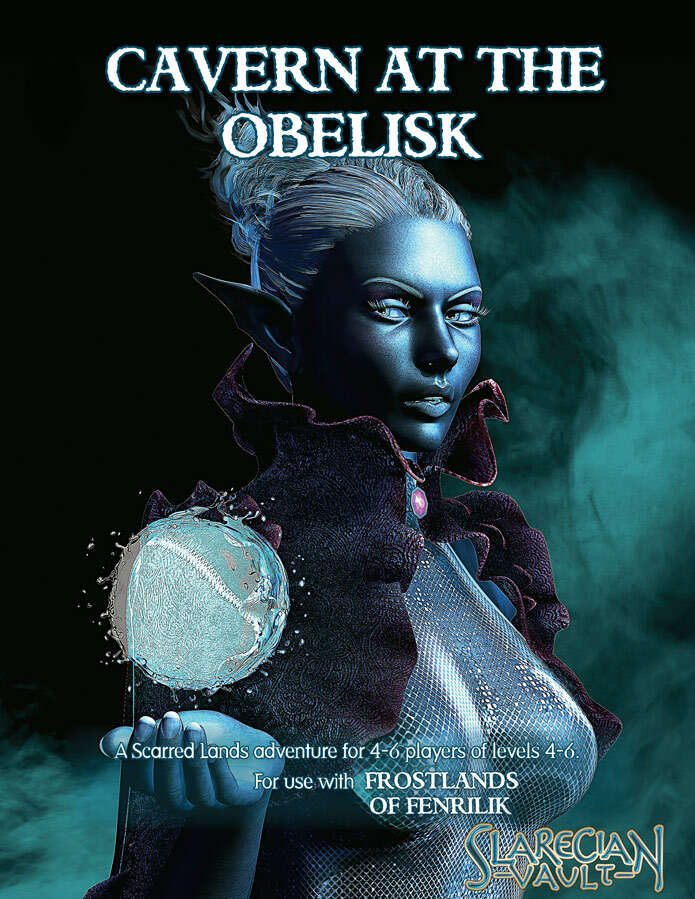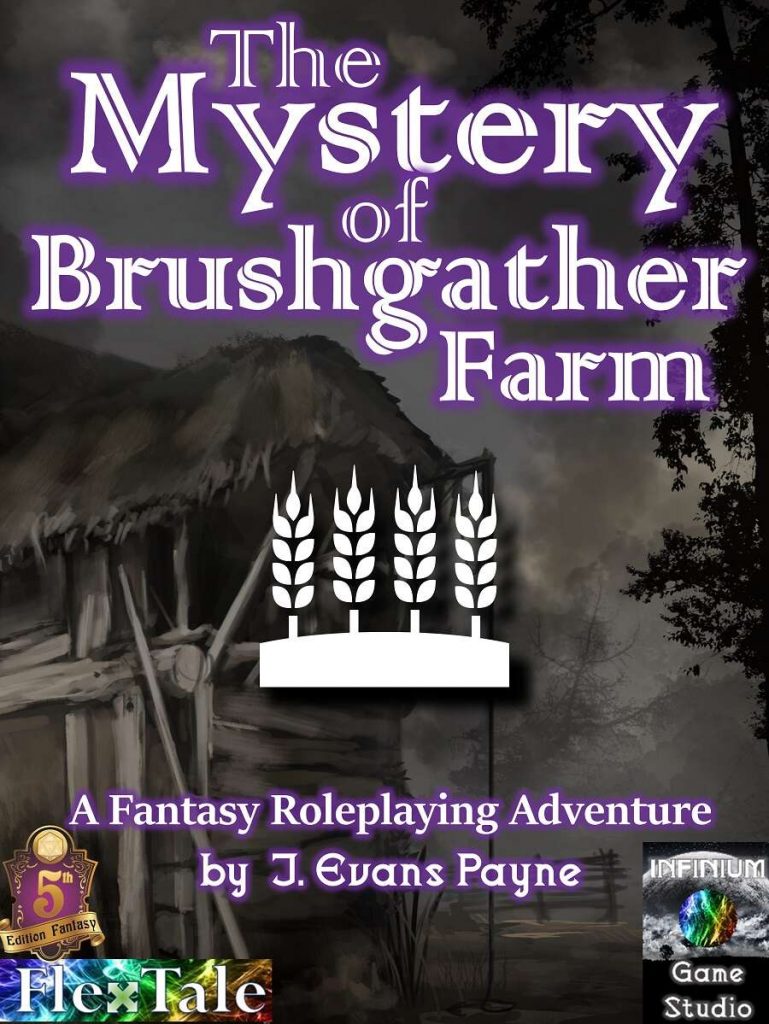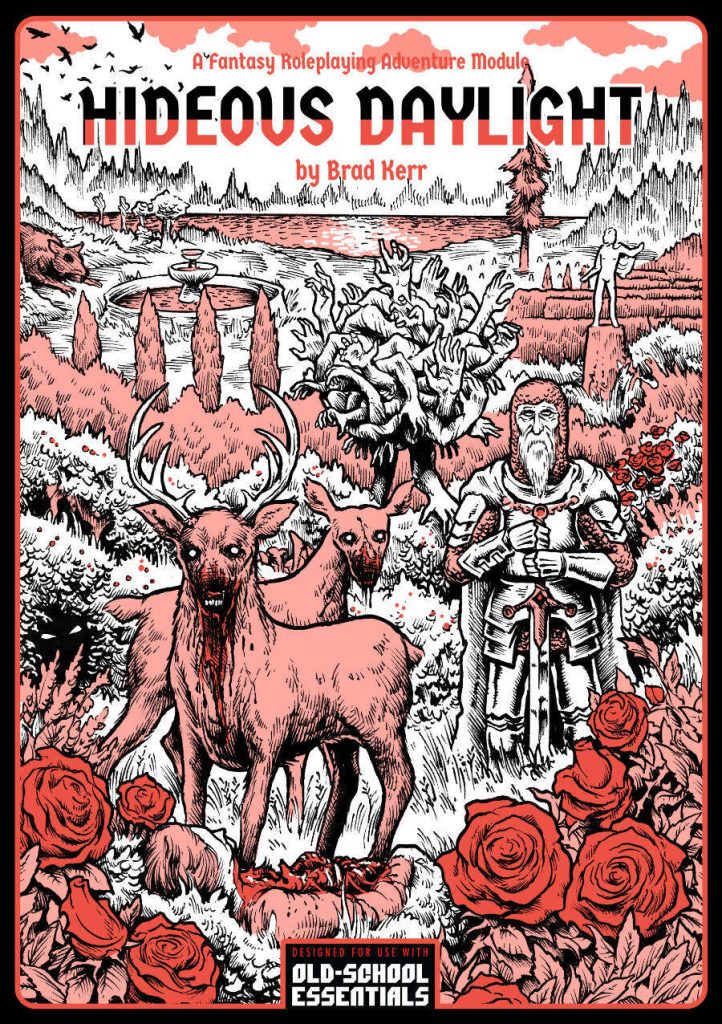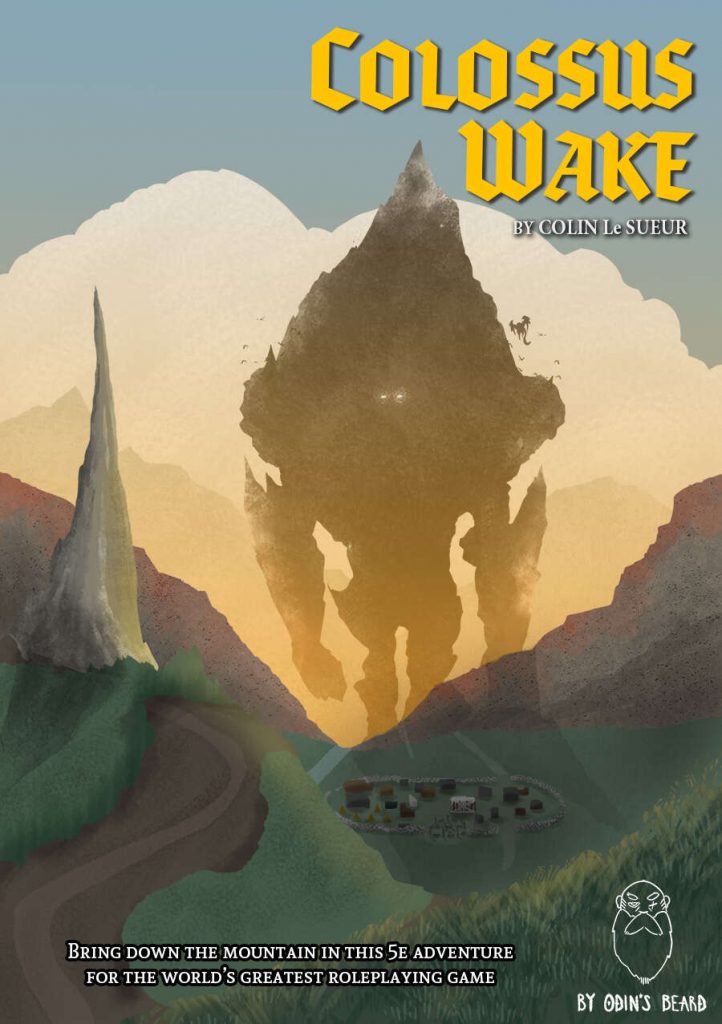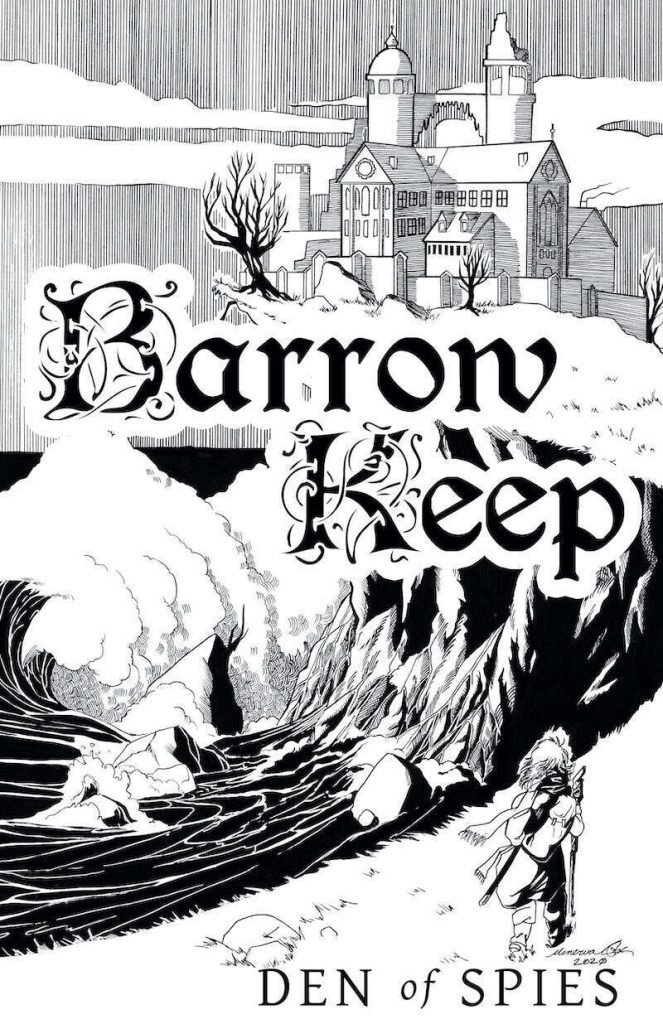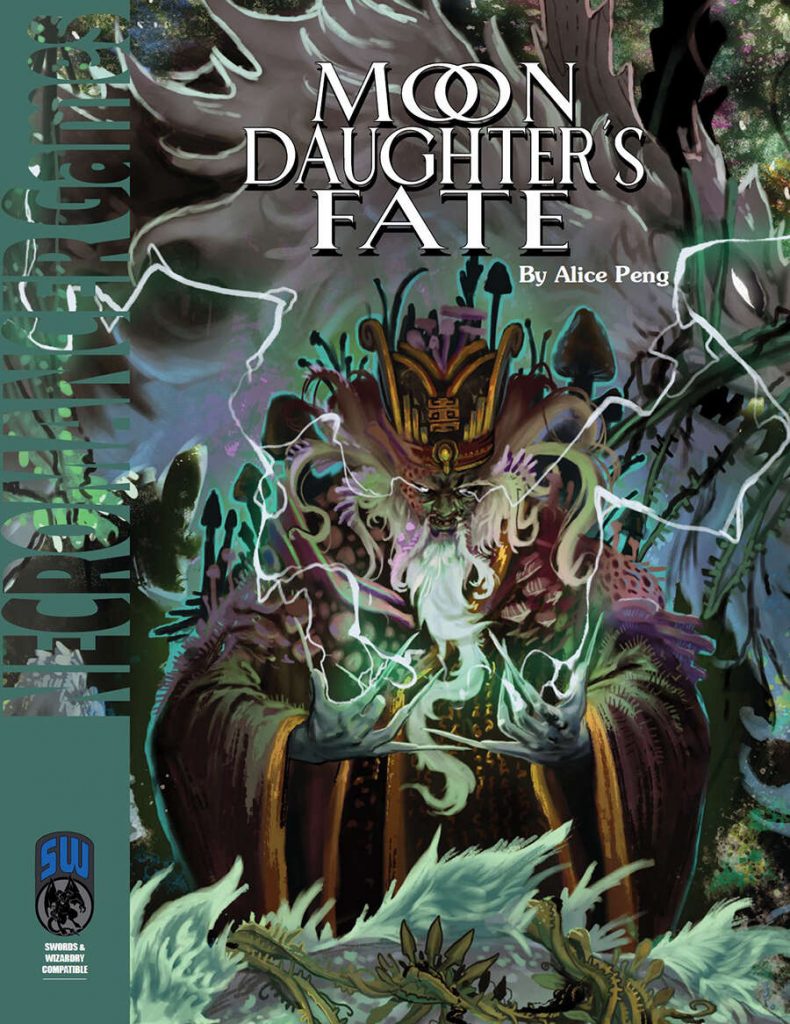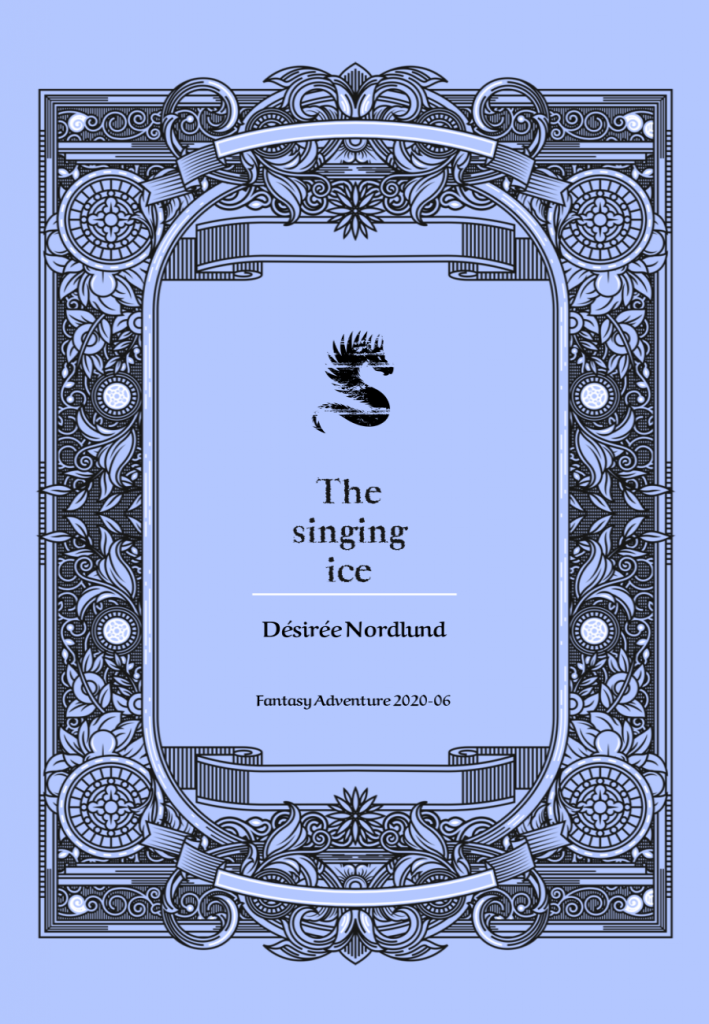
By Désirée Nordlund Self Published Generic Level ?
The party enters a castle that at first seems to be abandoned. But something is not right. It is empty and cold but clean and cared for. The princess has been turned into a beast. The spell will not be broken until a special crystal is placed in the highest tower. If that is done, it is proof that the princess learned to ask for help. The crystal is found on the other side of a portal, guarded by a dragon that should not be awoken.
This eighteen page adventure attempts to present a strongly evocative fairy tale vibe. Rather, it comes out as an outline of an adventure, abstracted, rather than an adventure, leaning on the excuse of “it’s a system agnostic adventure.” Weak writing and a dearth of encounters lead to a snoozefest.
Reading just the publishers blurb you can see the hows and whys of me selecting this adventure for review. It’s got a fairy tale like thing going on, at least from that description. The classic elements of an abandoned castle, princess, highest tower, crystals, and dragons. What’s not to love! I am a fan of the classics, well done! But this ain’t it.
There’s a lot going on wrong here in this adventure. There’s a kind of genre mismatch in places, with the adventure never really committing to the fairy-tale/mythic vibe and waffling back to a traditional D&D like vibe at times. While attempting evocative writing, or at least stating it is trying to do that, it instead comes across as somewhat boring writing, lacking evocative descriptions (for the most part) and a writing style that makes me think the designer might be some kind of fiction writer, confused to the current genre they are working in. And then there’s the adventure proper, the encounters and the like. This being a “generic” adventure for “all systems” there are no stats, which is almost always a mistake. Not much meaningful interactivity is present.
The interactivity here is either missing or wrong. We get, maybe, one combat, maybe two, and little else beyond that. A crawl through some flytrap like plants, a talk with The Beast from Beauty fame, and a talk, maybe, with a farmer. Perhaps a trek up in the snow. (More on that later.) “This place is dark and you need to find your way through it” or “It looks scary but s harmless” is not interactivity. It COULD be interactivity, but, as presented, it’s just an OUTLINE of an adventure. A generic framework. There is not enough specificity to ground it down to an actual adventure. Further, There are a couple of times where interactivity is actual missing that should be there. The Beast who can only be killed by stabbing her in the heart. How do we know that? Were there clues to discover in an empty castle? No. It’s just a note for the DM.
There’s an appeal of genericism here that is unwarranted. It’s almost always unwarranted. You are rewarded with things “like pearls and diamonds as a thank you.” No. No we are not. We’re awarded with something SPECIFIC. Something that does the work for the DM, inspires them to run a great game. And generic text like “like pearls and diamonds” does not do that. Nor does things like “its really cold out” or “you could get exhausted” as the extent of the mechanics. This is done in order to keep the adventure generic/system neutral, but to what end? Just stat it for 5e, or OSR, or write the fucking thing for Polaris, a system that this adventure is SCREAMING for. Bad DM’s won’t use this adventure and good ones will restart it/run it on the fly. But, what you WILL get is the specificity to tie things down to the ground. To be concrete.
“You walk along …” or “You walk up to the gate …” or “You see …” betray a writing style that is focused on some kind of novel experience. Adventure writing is not novel writing and, I think, few of the skills translate well. Adventure writing is TECHNICAL writing. You must have a text that is completely optimized for running it at the table. And, a part of the optimization is to have a terse and evocative descriptive style. Chaos, that is perfectly organized, as I like to say. But that’s not the writing here. It’s clearly meant to be a kind of scripted plot, with moments outlined, and it’s written as such. But the correct framework, even for a story based adventure (as opposed to a traditional 5e plot one or OSR exploratory one) is not that. You need to present situations, interactive ones, things that the players canmake interesting decisions about.
And the embedded URL’s don’t work, just three days after publishing this on DriveThru. And the directions in the text for room layout are inconsistent, with gates SE and NE being interchanged.
One quick note about ESL. I get the sense this is a Scandanavian-native speaker. I’m pretty generous with ignoring language issues as long as meaning comes across, and it does. And their English is better than my Scandanavian (hmmm, is that insulting, to lump each country in to the generic “Scando” group?) The language issues are probably not an issue in this adventure, at least where meaning is concerned. A quick english language check by an english editor could have been in order, though. More importantly, are the evocative language issues related to the ESL thing? If so, it would be the VERY first time I have seen that … so I’m inclined to say no. But, it really just isn’t that evocative.
This is $6 at DriveThru. The preview is three pages, that show the main adventure text, the start of the adventure. So, it’s a good preview. Note the main hall description, for both good (fairytale!) and ill (evocative writing.)
https://www.drivethrurpg.com/product/341524/The-singing-ice?1892600

